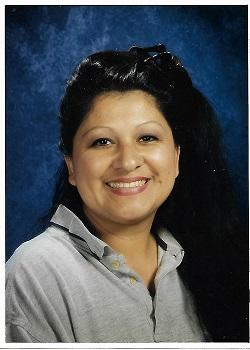Heart and Soul
|
Lately, I have been perusing books and online websites to find those “golden nuggets of truth” about brain research and I happened upon this one: The neuroscientific research about learning has revealed the negative impact of stress and anxiety and the qualitative improvement of the brain circuitry involved in memory and executive function that accompanies positive motivation and engagement. I concur! Wait, what exactly did I just agree with?
|
|
|
Simple terms, I agree with this assertion from an article entitled, “The Neuroscience Behind Stress and Learning” that our classroom climate has a direct impact on how well our students are going to learn.
As a self-proclaimed highly-sensitive person, I can assure you that this was certainly true for me. When I was a child, I was profoundly affected (both in a negative and positive way) by my environment--the tone of my teacher’s voice, the expression on her face, her mood. I was a sponge in the most vulnerable sense of the word. She held an immense amount of power.
Now I am the bearer of that emotional torch. I set the tone. I create the atmosphere. Believe me; I do not take that responsibility lightly. I know I can use that flame to sear the very spirit of my students or I can use that flame to fuel a passion for learning, connecting, and collaborating.
|
I’ve often heard it said that kids don’t care how much you know until they know how much you care. It sounds so cliché, but I have found it to be true in my experience. We all want our students to thrive academically. But, in order to do that, we need to ensure that our classroom environments encourage our students to let their guards down so that they can learn.
|
|
Like a broken record, there are three words that I have repeated year, after year, after year--Attention, Respect, and Support. They align perfectly with the tenets of PBIS. If my students and I are all giving one another attention, respect, and support, then we are both creating and benefiting from an atmosphere where we can all reach our full potential.
|
|
“The affective filter can be prompted by many different variables including anxiety, self-confidence, motivation and stress.” -Stephen Krashen
|
For the past couple of years, I have dutifully posted the PBIS matrix on my bulletin board. I did the same thing this year. But after a couple of days, I decided to take it down. I couldn’t read it. I was bound and determined to enlarge the wording to about five times the size of the original one. I realized that it couldn’t serve as a useful tool for me, nor for my students, if we couldn’t even read what it said. (Remember, my eyes are from the 1900’s.)
 In my mind’s eye, I see a building being erected one brick at a time. Each brick is engraved with a different, yet essential, piece--Thinking Maps, Write from the Beginning, PBL, E.L.D., G.A.T.E. strategies, Kagan and the list goes on. This year I’m going to add a new brick emblazoned with the acronym, UDL. (Our Assistant Superintendent, Tammy Lipschultz, recently introduced me to an amazing framework for teaching and learning known as UDL and to a renowned expert and proponent in the field, Katie Novak. You’ll hear more about UDL in my next blog.) In my mind’s eye, I see a building being erected one brick at a time. Each brick is engraved with a different, yet essential, piece--Thinking Maps, Write from the Beginning, PBL, E.L.D., G.A.T.E. strategies, Kagan and the list goes on. This year I’m going to add a new brick emblazoned with the acronym, UDL. (Our Assistant Superintendent, Tammy Lipschultz, recently introduced me to an amazing framework for teaching and learning known as UDL and to a renowned expert and proponent in the field, Katie Novak. You’ll hear more about UDL in my next blog.)
Each year we rebuild. WE are the stonemasons. Sometimes we use the same bricks and sometimes we use new ones. What does not change, though, is the need for a strong foundation. Our classroom environment serves as the foundation upon which all the other bricks can be laid. Let’s provide an atmosphere where affective filters go down and learning goes up!
Respectfully,
Lola E. Jollie
|
No comments:
Post a Comment